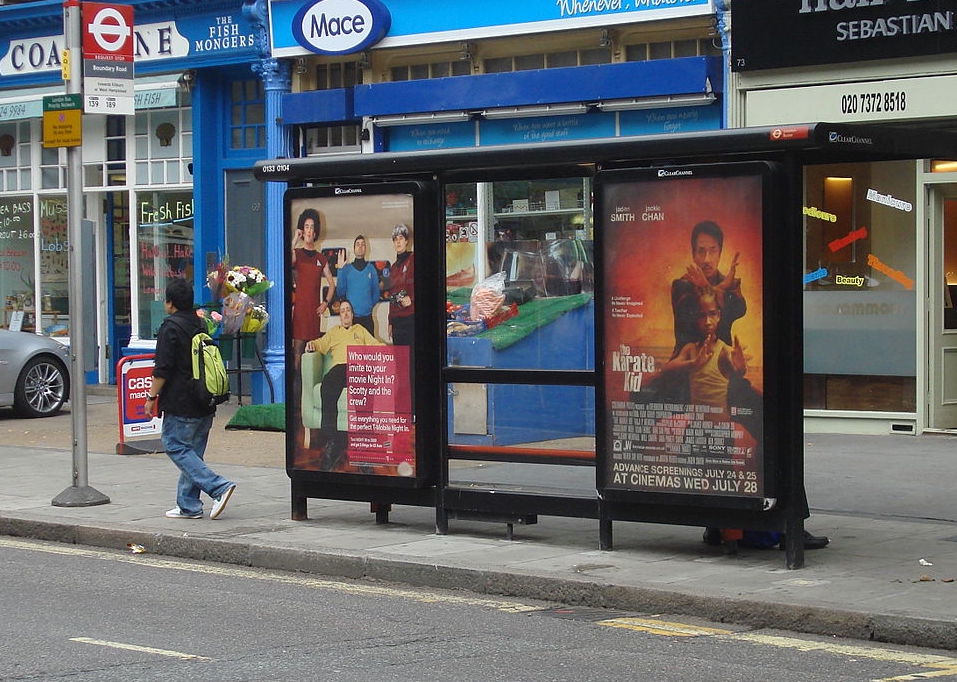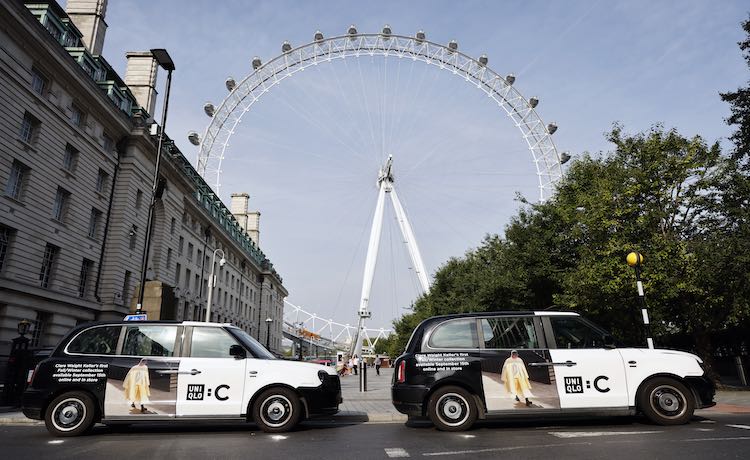How Effective Are Bus Stop Advertising Campaigns?

Bus stop advertising is an OOH campaign that can connect with audiences. The audience reach for bus stop advertising campaigns is also typically high. According to the UK Government Department of Transport, the number of local bus passenger journeys made in England in the year ending March 2023 was 3.4 billion.
At Drovo Media, we are a transit media provider of taxi wraps and on-vehicle digital advertising screens. Our team have a profound understanding of the transit media space and different types of transit media.
So, let’s go ahead with our insights and thoughts on how effective bus stop advertising is with audiences today.
The Origins of Bus Stop Advertising
Bus stop advertising is a pretty cool idea, but who saw the gap in the market for it and where did it all start? The answer lies with Jean Claude Decaux – founder of the world famous JCDeceaux firm and an OOH advertising pioneer.
Bus stop advertising was invented by Jean Claude Decaux when he spotted its potential. Before JCDecaux, there weren’t any bus shelters in France, and he set about offering to build and maintain bus stops and shelters in return for being allowed to use them for free advertising space. Lyon received the first JCDeceaux bus shelter back in 1964.
The Digital Revolution has its early roots in the 1980s. The digital age is here to stay and digital displays are part and parcel of today’s advertising industry. However, digital bus stop displays did not come on the scene until the 2000s.
Digital bus stop campaign displays often show interesting images in high resolution and rotate, hence you can see multiple different ads in the space of a few minutes. But bus stop advertisements aren’t mobile and don’t move with your audience like the on-vehicle ads we provide here at Drovo.
The shadowfencing technology for our on-vehicle campaigns means that ads will simultaneously appear on the mobile devices of people within 200 metres of proximity to your branded taxi with us.
Does the way Drovo provides a bridge between Out-of-Home and digital advertising interest you? Get in touch to add the shadowfencing feature to your taxi advertising campaigns.
Get in contact with Drovo
Striving to make a genuine impact on OOH audiences? Taxi advertising campaigns with Drovo are the solution.
Speak to the teamBus Stop Advertising Costs
So, how much does bus stop advertising cost? Well, that depends on several factors…
Duration
Firstly, the duration. How many weeks or months do you want to run a bus stop advertising campaign? The duration of a bus stop campaign will have a significant impact on the overall cost, with longer campaigns costing you more. There may be valid reasons behind why you want to run a shorter or longer campaign.
Location
The location of a bus stop will also contribute to the pricing of bus stop advertising. More expensive bus stop advertisements will be at locations with high footfalls that are able to generate higher on-street impressions.
Running ads at bus stops in central London for example will be considerably more pricey compared to elsewhere. Taxi campaigns on custom-made routes in central London with Drovo however maximise your exposure to inner London audiences at a fraction of the cost.
The benefit of running campaigns with branded taxi fleets with Drovo is that it means you can have multiple campaign assets in a variety of different locations at once, even if they are a great distance apart, as opposed to just one or a handful of bus stop advertisements.
Drovo’s network of carbon-neutral transit media is ideal for your OOH campaigns.
The Pros of Bus Stop Advertising
What are the upsides and benefits of bus stop advertising? Here we take a closer look.
The Potential Positive Impact on Audiences
Get it right and come up with creative bus stop advertising campaigns, and you stand a chance of having a real impact on your audience. Creative ideas go a long way in sprucing up bus shelters and making campaigns both interesting and memorable for consumers. All the sophisticated digital screens around today make bus stop advertisements all the more compelling and eyecatching.
A good example of an OOH bus stop advertising campaign that had a high impact was the Ikea 2018 campaign where the brand transformed bus shelters into comfy living rooms. This was done by changing bus shelter benches into plush outdoor sofas to ‘make commuters feel at home’ and promoting Ikea by further increasing brand awareness.
At Drovo, we run outdoor brand activation events alongside our taxi campaigns that have a real impact on audiences. Want to get an audience more excited about your brand at a specific location? Perhaps you are opening a new store or launching a new product soon? At Drovo, we run targeted taxi swarm domination events from 2-8 hours + in duration concentrated in local areas where you want your brand to stand out.
Check out how a taxi swarm we ran in Manchester in the video below.
Run Several Ads At a Time
Digital bus stop screens are conveniently able to rotate between ads. The benefit of this is that it allows you to run several different bus stop advertisements at a time for your brand at the same bus stop. Is the bus stop at a particular prime location? If so, running several ads there at a time could be a good idea.
Connect With People From All Walks of Life
All members of the public from all backgrounds will pass by bus stop advertisements at some point, including motorists, shoppers, commuters, kids on their way to school, parents, the elderly, that’s right, everyone and anyone!
Therefore, another perk of bus stop advertisements is your ability to use them to connect with consumers from all walks of life. Bus Stop advertising can be useful if you intend to raise brand awareness by running above the line advertising campaigns aimed at a mass audience.
The Drawbacks of Bus Stop Advertising
Now we have weighed up the advantages of OOH bus stop advertising campaigns, let’s consider its drawbacks.
Bus Stop Advertising Does Not Move With Audiences
Bus stop advertisements are fixed to one bus stop location-wise, whereas the taxi campaigns we offer at Drovo are mobile. This lack of mobility and dynamism of bus stop advertising is one of its drawbacks.
Taxi advertising allows you to drive up brand awareness in all the nooks and crannies of urban areas. After all, not all streets in cities are on bus routes! With Drovo’s tailor-made tracked taxi campaigns, our drivers go anywhere and everywhere with your audience.
At Drovo, we firmly believe in sustainable advertising, hence we carbon offset all campaign emissions using our proprietary vehicle tracking dashboard technology. We also encourage the adoption of electric vehicles by paying electric vehicle drivers more, and we ensure all our taxi wraps are made from 100% recyclable materials.
Overly Generic Audience Targeting
Another potential shortcoming of bus stop advertising is its limitations when it comes to highly targeted campaigns hoping to connect with a small group in a specific location. Bus stop ads can be an overly generic approach which leads to a lack of focus in campaigns.
We run sustainable taxi campaigns in 13 UK cities, and we are able to leverage the pioneering proprietary vehicle tracking dashboard we have come up with so you can track each vehicle in your taxi advertising campaigns.
The Price of Bus Stop Advertising
Another con is that bus stop advertising is not always cheap, especially if you are hoping to run a longer duration campaign that will last a few months. How you view the cost-effectiveness of bus stop advertising will depend on your budget and its limitations.
How Can You Measure Bus Stop Advertising Campaigns?
Measuring the performance of Out-of-Home bus stop advertising campaigns is vital, you want to be able to assess how effective they are and the impact they are having. But in reality, measuring the impact of bus stop advertising campaigns is difficult.
However, the innovative live dashboard feature we have created at Drovo means you are able to see real time data and stats daily relating to the performance of your taxi campaigns, such as impressions and distance covered by each vehicle. Want to reap the benefits of having more transparency over your Out-of-Home ads? Go with Drovo.
What Is Street Furniture Advertising?
Bus stops and shelters are a type of ‘street furniture’ media. But what is street furniture advertising? Street furniture is when urban objects are used for advertisement campaigns.
One of the advantages of street furniture campaigns for brand awareness and impact is not only that they integrate advertising into everyday objects for city residents, but also that street furniture is usually conveniently positioned at eye level. This means that the public shouldn’t miss your advertisements.
Examples of Street Furniture
Examples of street furniture used for street furniture advertising campaigns (aside from bus stops and shelters) include
- Benches
- Telephone boxes
- Street bollards
- Information boards
- Shopfronts and shop shutters
- Public toilet advertisements
You should now know more about the effectiveness of bus stop advertisements and how they can impact OOH audiences. Are you attracted by the idea of using Drovo’s measurable on-vehicle advertising service to rocket launch your OOH campaigns? Get in touch.

Get in contact with us
Now you have come to the end of the blog, why not have a chat with us about taxi campaigns?
Speak to the team today